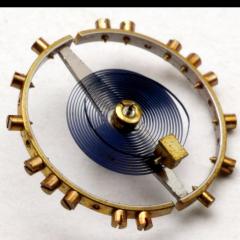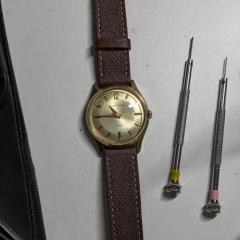Double Balance wheel WTF!
-
Similar Content
-
Recently Browsing
- No registered users viewing this page.
-
Topics
-
Posts
-
By Blackminou29 · Posted
hello everyone, I am a new enthusiast of fine mechanics and I come to your community to learn more. I completed the complete watchrepairchanel course, which I greatly appreciated. I'm starting a small collection of divers, new and old (benarus worldiver, yema superman, seiko skx, hamilton frogman...) and I also bought some old movements and equipment, in order to start operating with an open heart. please excuse my somewhat limited English but I'm French and it's a bit cultural for us... 🙂 Thank you for your welcome and see you soon -
By Blackminou29 · Posted
Hello everyone, I have a little problem with my watch which has a Miyota 6m17 gmt movement. I wanted to know, apart from dismantling it and replacing it, if there is a mechanical movement of the same size that would be compatible (same diameter of the movement and hands)? thank you in advance for your help. -
By StephPrime · Posted
Hello all I am trying to get some links taken out of my watch and the teeny screws just spin, any ideas on how to get them out? Any help or advice appreciated. Many thanks Steph Prime -
Welcome to the forum, enjoy. I have a varimatic that went out of sequence because it’s hydronic oil ran very low. Must admit it’s still in my garage just know time to fix it. Purchased a cheap Indian Junta/ sonic Pearl as a stop gap a few years ago and it still performs perfectly so no incentive to fix the Varimatic.
-








Recommended Posts
Join the conversation
You can post now and register later. If you have an account, sign in now to post with your account.
Note: Your post will require moderator approval before it will be visible.